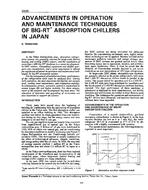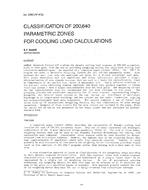Nationwide, energy consumption has lately been the subject of increased research focus, largely because of concerns about climate change and increased international turmoil. Buildings are heavy consumers of energy, and residential building design is rapidly addressing topics to maximize energy conservation.
Annual energy analysis of a building informs the choice among disparate energy measures, for considerations including cost, durability, occupant comfort, and whole-house energy use. Physics-based and empirical models of elements of a building are used in such analyses. High-performance wood-framed walls enable builders to construct homes that use much less than 40% of the energy consumed by similar homes built to minimum code. Modeling for these walls has considered physical features such as framing factor, insulation and framing properties, roughness and convective effects, and air leakage. The thermal effects of fasteners used to construct these walls have not been fully evaluated, even though their thermal conductivity is orders of magnitudes higher than that of other building materials.
Fasteners, namely drywall screws and siding nails, are considered in this finite-element thermal conductivity analysis of wall sections that represent wood-framed walls with 6% to 30% framing factor that are often used in high-performance homes. Nails and screws reduce even the best walls’ insulating performance by approximately 3%, and become increasingly significant as the framing factor increases. A correlation coefficient is provided for adjusting high-performance wall R-value.
Citation: Thermal Performance, International Conference, 2010
Product Details
- Published:
- 2010
- File Size:
- 1 file , 2.7 MB
- Product Code(s):
- D-BUILDINGSXI-50


